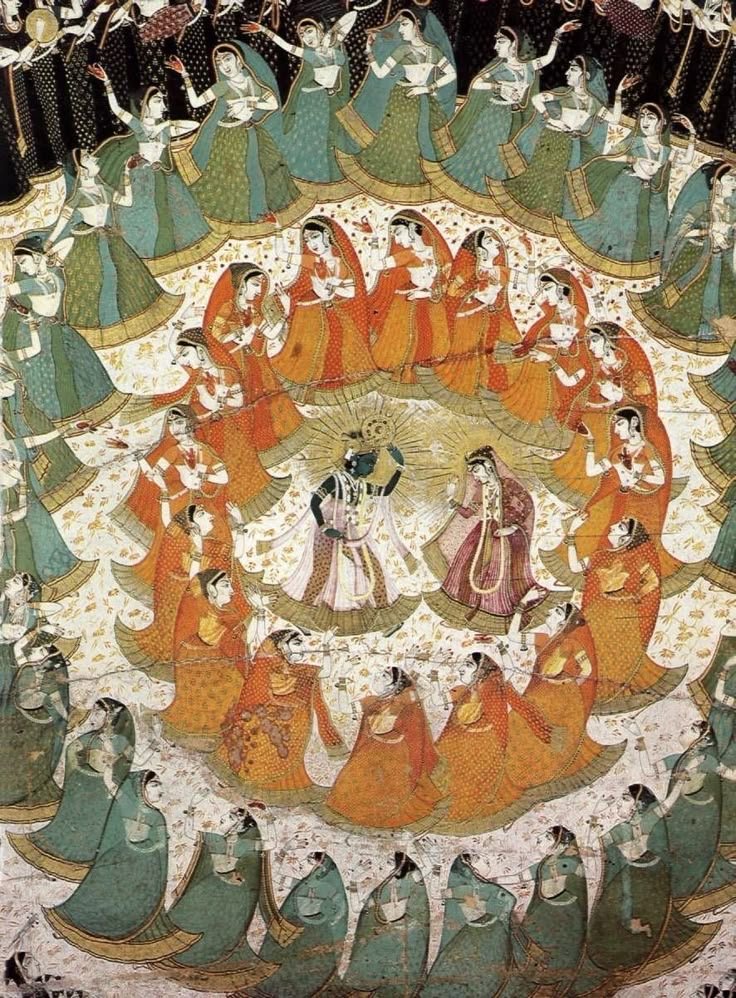FULL MOOn पूर्णिमा
Artwork by @chaya.collective - Aśvinī Kumaras
October 17th 13:26 Spain | 4:26 AM PST
The full moon (Pūrṇimā ) of October aligns with the first Vedic lunar mansion in the zodiac, Aśvinī (Aries), known as the star of transport. With the new moon in Hasta finding its culmination here, this period becomes a potent time, charged for new beginnings and the initiation of forward movement with your projects and plans.
Aśvinī holds the spark of latent power, igniting the unmanifest into manifestation. Ruled by the Aśvinī Kumāras, the celestial physicians to the Gods, this nakshatra embodies healing, rejuvenation, and the power of alternative medicine. Symbolized by the head of a horse, it carries the vitality and eagerness to start the journey and express ideas with a swift and determined energy. Initiatives taken now, especially those related to health and healing, are said to bear rapid results, harnessing the potency of creation itself.
Artwork: Pinterest
There’s a desire here for a fresh start and rebirth, one that lays the foundation for something enduring. This is attainable through unwavering focus and a commitment to the inner and outer purifications that may have kept you in a holding pattern. This constellation carries the swift momentum to achieve one’s objectives, much like its animal totem, the horse. Just as the racehorse wears blinders to avoid distraction or misstep, we too must maintain singular focus, centered in our own lane. Let us remain resolute — unmoved by the opinions, expectations, or noise of the waking dream and world around us — steadfast in the pursuit of what truly matters.
Like a doorway wide open, we enter the final month of Saturn's retrograde, now in Śatabhiṣā. Take advantage of this moment to see things a little more clearly. This period offers a second chance to revisit unresolved matters from early March and April, with a fresh perspective—inviting you to approach them with newfound clarity and refined sense of mastery.
With Jupiter also retrograde in Mṛgaśirā, the Searching Star, we are called inward—to recalibrate our inner compass and deepen our quest for truth and wisdom. This is a time for introspection, for refining the tools we carry forward on our path, and for embracing the revelations that emerge from within.
Artwork: Pinterest - Rāsalīlā
This potent full moon marks the beginning of Kārttik, one of the most sacred months in the Vedic calendar, and is celebrated as Sharad Pūrṇimā. On this night, the moon is adorned with all sixteen celestial arts (kalas), enhancing its spiritual significance. Its healing and nurturing energies are believed to be at their peak, and its light is said to carry divine nectar, offering rejuvenation to those who bathe in its glow.
Legend tells of Lord Kṛṣṇa performing the divine Rāsalīlā with the gopis of Vṛndāvan under this luminous full moon, symbolizing the union between the devotee and the divine.
The celebration also marks the end of the monsoon season. It is believed that Goddess Lakṣmī descends to Earth on this night—her devotees seek to become absorbed in her eightfold nature, offering their hearts in devotion and reverence.
Many will engage in moon-gazing, place homemade rice pudding (kheer) under the moonlight, or immerse themselves in devotion to Goddess Lakṣmī. These rituals harness the positive energies of the moon, inviting blessings of abundance, rejuvenation, and spiritual elevation into their lives.
ॐ श्रीं महा लक्ष्म्यै नमः
All my Relations
To book a private Vedic Astrology consultations, pleave visit: Jyotish Astrology








